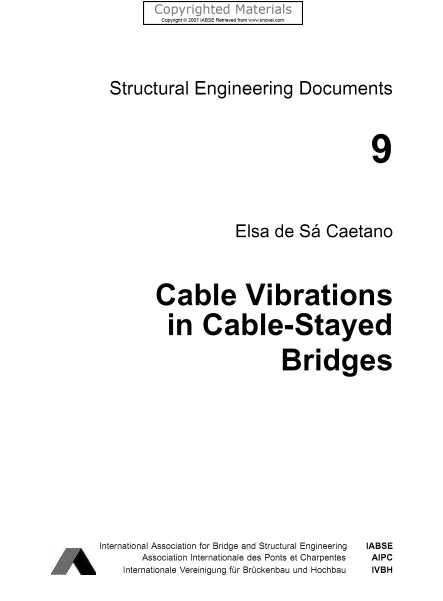Cable Vibrations in Cable-Stayed Bridges
1. General
Cable-stayed bridges were established as a new category among the classical types of bridges in the second half of the twentieth century. Their relative stiffness when compared to suspension bridges, self-balancing characteristics adequate for construction in weak soil and offering an economically advantageous solution for moderate to large spans, and notable aesthetic

qualities, led to an enormous increase in the construction of these structures all over the world. This expansion was naturally accompanied by significant technological developments that led to progressively larger and more slender prototypes. Cable-stayed bridges are subjected to a variety of dynamic loads like traffic, wind, pedestrians and seismic loads, which are
rather complex to characterise. Considering in addition that stay cables constitute very flexible structural elements generally characterised by small damping coefficients, it is understandable that these elements are very prone to vibrations.
Download
*